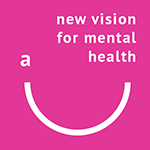This article by Dr. Ekaterina Netchitailova has been published by Mad in America. It begins:
“The psychiatric hospital of today might appear as a foreign, scary object to the mind who has never visited the institution. It represents the unknown, the territory that one is terrified of, but at the same time attracted to with natural human curiosity. Let’s be frank here: we want to know what is inside and who is ‘hiding’ there.
In the eighteenth century, in Europe, many mental institutions called ‘asylums’ were open to the public. In exchange for some entrance money, interested visitors could have a peek: they could stroll in the corridors and observe the patients inside. It was a popular destination by all accounts. People found ‘madness’—or rather, what is assigned to the term—interesting and irresistible.
Michel Foucault wrote about it extensively, presenting a picture of a typical Sunday morning in Paris for a middle-age couple. They wake up, have breakfast, and then go for a visit to a local asylum for entertainment. Doors were open to the eager public, and the asylums never lacked in visitors. It is indeed interesting, and probably more attractive than going to a theatre or the modern cinema. People aren’t acting there, and they are real.
Today, that same curiosity about manifestations of ‘madness’ is satisfied via books or, more often, via movies. It isn’t by accident that such movies as Girl, Interrupted and A Beautiful Mind were such a big success: ‘madness’ has always been fascinating, and will always attract and terrify the human mind at the same time.
But let’s look at the psychiatric institution of today. It isn’t by accident that doors to it are closed to the curious mind, and only those who are unlucky end up being inside, on the wrong side of the equation—being a patient. The psychiatrists are the ones who walk really free there, looking, observing, analyzing, and then administering the cocktail of modern drugs. We read some stories, we get some news, but it is all presented to us as ‘mental illness’, part of the bigger discourse on ‘mental health’ …”
You can read more from here.




